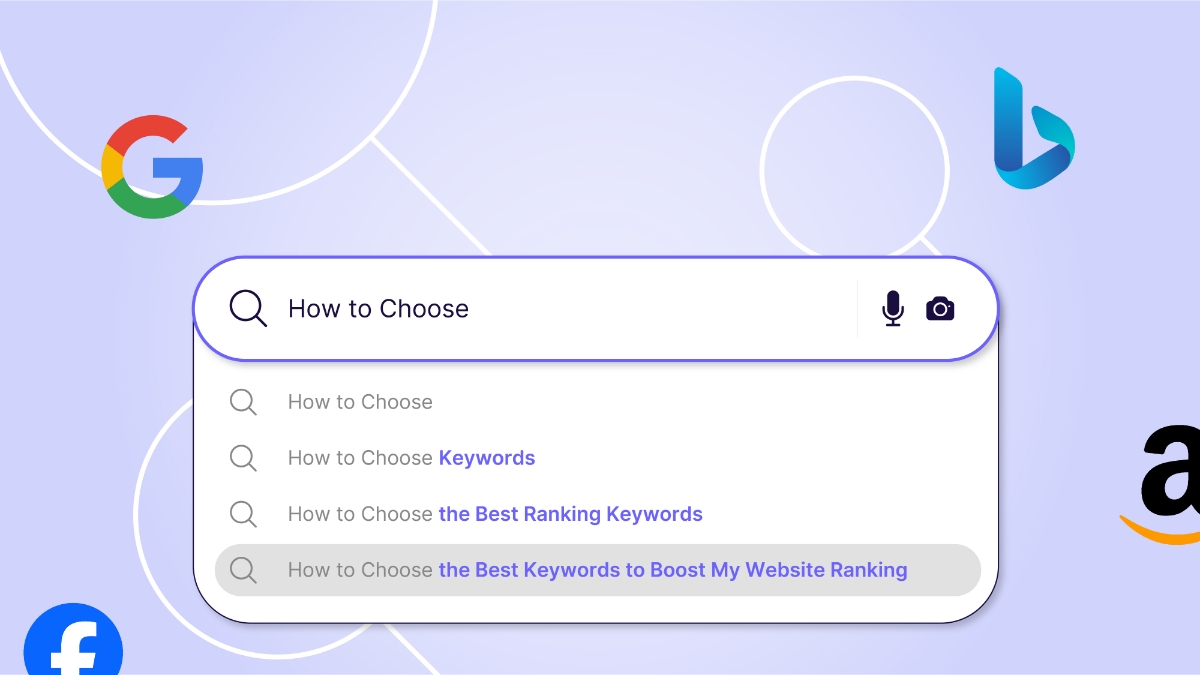If your business operates in the digital space — whether you’re launching a bespoke online store or managing a complex, integrated platform — your ability to attract the right traffic depends on how well you understand and use keywords. They’re more than just SEO jargon; they’re the bridge between what your audience is searching for and what your website delivers.
Here’s how to choose keywords that don’t just drive traffic, but drive relevant traffic — the kind that converts.
Why Keywords Still Matter — A Lot
In a landscape dominated by ever-evolving algorithms and AI-assisted search, keyword research remains one of the most powerful tools in your digital strategy toolkit. It’s how you identify not just what people are searching for, but how they’re searching for it — and what intent lies behind those searches.
Think of keywords as your customer’s voice, captured through data. If you’re not listening, your competitors probably are.
The Three Pillars of Great Keyword Strategy
To cut through the noise and drive meaningful traffic, your keyword choices should be evaluated on three core principles:
1. Relevance
The best keywords tightly align with your products, services, and customer needs.
For a client in the luxury homeware space, targeting “designer ceramic vases” or “handcrafted dining sets” will outperform vague terms like “home decor” by connecting with buyers who already know what they want.
Relevance isn’t just about getting clicks. It’s about attracting the right clicks — the ones that lead to purchases.
2. Authority
Google tends to favour websites with established credibility. If your domain is relatively new or you’re in a niche with heavy competition, targeting extremely high-volume keywords may be a dead-end. Focus on long-tail keywords that offer a realistic path to ranking while still reflecting buyer intent.
3. Search Volume
Search volume tells you how many people are looking for a particular term. But higher isn’t always better. A mix of low, medium, and high-volume keywords allows you to gain ground in areas where you can compete now, while laying the groundwork for long-term gains.
A 5-Step Process for Choosing the Right Keywords
Whether you’re optimising an enterprise-level platform or a boutique eCommerce site, the process of choosing the right keywords follows a clear — and repeatable — framework:
Step 1: Audit Your Business Offerings
Begin by mapping out the full scope of your products, services, and areas of specialisation. Be exhaustive. This list will become the foundation of your keyword categories.
Step 2: Create Strategic Categories
Group your products or services into clear, customer-focused categories. For example, if you run an online store that sells skincare, you might organise your offerings under themes like “Natural Face Care,” “Anti-Aging Treatments,” or “Vegan Moisturisers.” Then, start thinking about the specific language your customers might use to search for products in each category — such as “organic face wash,” “serum for fine lines,” or “cruelty-free night cream.”
This step helps you uncover how people are likely to find you online, and it sets the foundation for building keyword clusters that support both SEO and content strategy.
Step 3: Understand the User Intent
Not every customer who lands on your website is ready to buy — some are just browsing, others are researching, and some are comparing their options. To attract the right kind of visitors and guide them toward a purchase, it’s important to choose keywords that match their intent.
Here’s how to break it down:
- Informational – These users are looking to learn. Keywords might include: “how to care for leather boots” or “benefits of cold brew coffee.” These are ideal for blog content that educates and builds trust.
- Comparative – These visitors are weighing their options. Think of keywords like: “leather vs suede jackets” or “best cruelty-free skincare brands.” This is a great stage to position your products against the competition.
- Transactional – These are high-intent users ready to make a purchase. Examples include: “buy handmade soy candles online” or “free shipping protein powder UK.” These belong on your product pages or promotional landing pages.
By understanding the purpose behind different types of searches, you can create content and optimise pages that meet your customers where they are in their buying journey — and move them closer to checkout.
Step 4: Research Related and Semantic Terms
Use tools like Google Keyword Planner, SEMrush, Ahrefs, or even autocomplete suggestions to explore variations of your core terms. Synonyms and semantically related phrases help you cast a wider net and future-proof your strategy against algorithm updates.
For example, if you run an online store selling electric bikes, and your target keyword is “foldable e-bike,” you could expand your strategy with related terms such as:
- “compact electric bicycle”
- “urban commuter e-bike”
- “lightweight folding bike”
- “portable e-bike for city travel”
These variations let you speak the same language your buyers are using — whether they’re searching for convenience, performance, sustainability, or lifestyle benefits. Covering this range gives your products better visibility and positions you as an authority in your niche.
Step 5: Prioritise and Refine
Once you’ve built out your keyword universe, prioritise based on a blend of:
- Relevance to your offerings
- Competitiveness (keyword difficulty)
- Current authority of your site
- Potential for traffic and conversion
Start with achievable wins — keywords where you can realistically compete — and evolve your strategy as your site gains traction.
Practical Keyword Mapping: An Example
To make keyword planning easier, try organising your products into categories — then brainstorm the words your customers might use to find them.
Let’s say you sell premium outdoor gear. Here’s how you might break that down into keyword categories:
Category: Hiking Backpacks
- Core Keywords: hiking backpack, waterproof hiking backpack, lightweight rucksack
- Variants & Related Terms: ultralight backpacking gear, technical daypack, best backpack for multi-day hikes
Category: Camping Equipment
- Core Keywords: compact camping stove, 4-season tent, portable camping cookware
- Variants & Related Terms: backpacking stove, durable tent for cold weather, camp kitchen set
Category: Eco-Friendly Apparel
- Core Keywords: sustainable hiking clothes, recycled outdoor jacket, organic cotton base layer
- Variants & Related Terms: eco-conscious outerwear, green activewear, ethical performance clothing
As you map keywords to each product category, think about your customer’s mindset. Are they new to the activity and looking for beginner-friendly options? Are they experienced outdoor enthusiasts searching for technical specs? Let that intent guide your language.
This kind of structured keyword planning not only strengthens your SEO — it also helps shape your content strategy, from blog articles and product descriptions to email campaigns and landing pages.
Conclusion
Choosing the best keywords isn’t a one-time task — it’s a living, breathing part of your digital marketing. Monitor performance through tools like Google Search Console and refine your keyword targeting as your authority grows and market dynamics shift.
Remember, SEO success isn’t just about traffic — it’s about attracting the right traffic. The keywords you choose today can position your business for greater visibility, stronger leads, and sustainable growth tomorrow.
If you’re serious about making your website work harder for your business, start by speaking the same language as your customers — and use keywords to lead them right to your (virtual) door.
Ready to take your eCommerce store to the next level?
At Greenhat, we build high-performance websites that convert visitors into loyal customers. Contact us today to see how we can help you grow.








